We have recently lost an important figure in the landscape of Australian children’s literature. Collector, Ken Pound, passed away on May 14 of this year. To celebrate this year’s Children’s Book Council of Australia Week (Aug 17-23) we take a look back at Ken’s life and the wonderful collection that is now held by State Library Victoria.
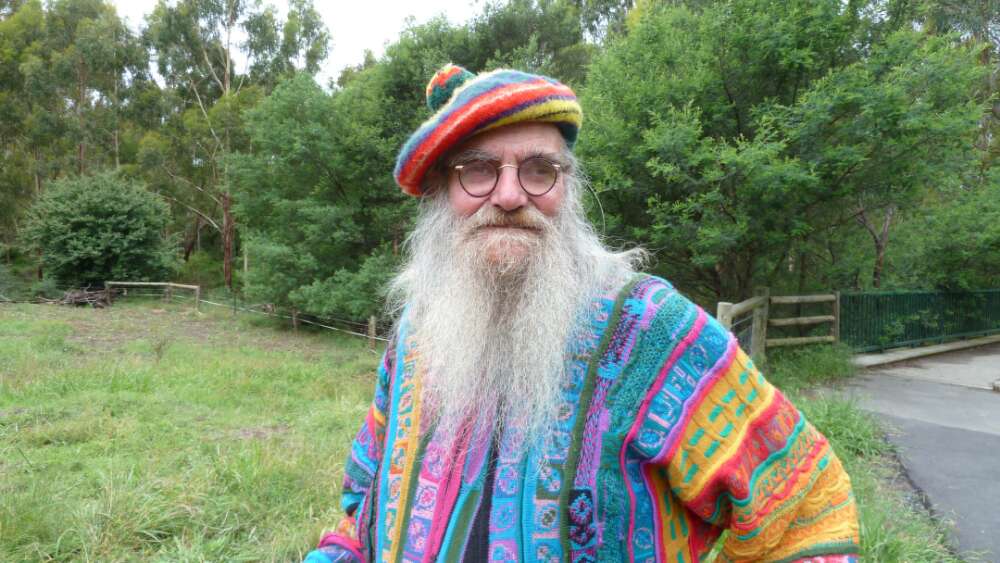
Portrait of Ken Pound for the Forgotten Australians and Former Child Migrants oral history project, 2010. Photo by Gwenda Davey. This work is in copyright. National Library of Australia; nla.obj-228944556
In 1994 State Library Victoria, with the support of a State Government grant, was lucky enough to acquire a significant and unique collection of children’s books from private collector, Ken Pound.1 This collection of over 25 000 Australian and New Zealand children’s books from the 19th and 20th centuries was collected fastidiously and without discrimination, resulting in an incredibly comprehensive collection. Ranging from Australian children’s classics to virtually unheard of ephemeral and advertising material, Ken collected anything published for children that related to Australia, whether it was produced here or overseas.2
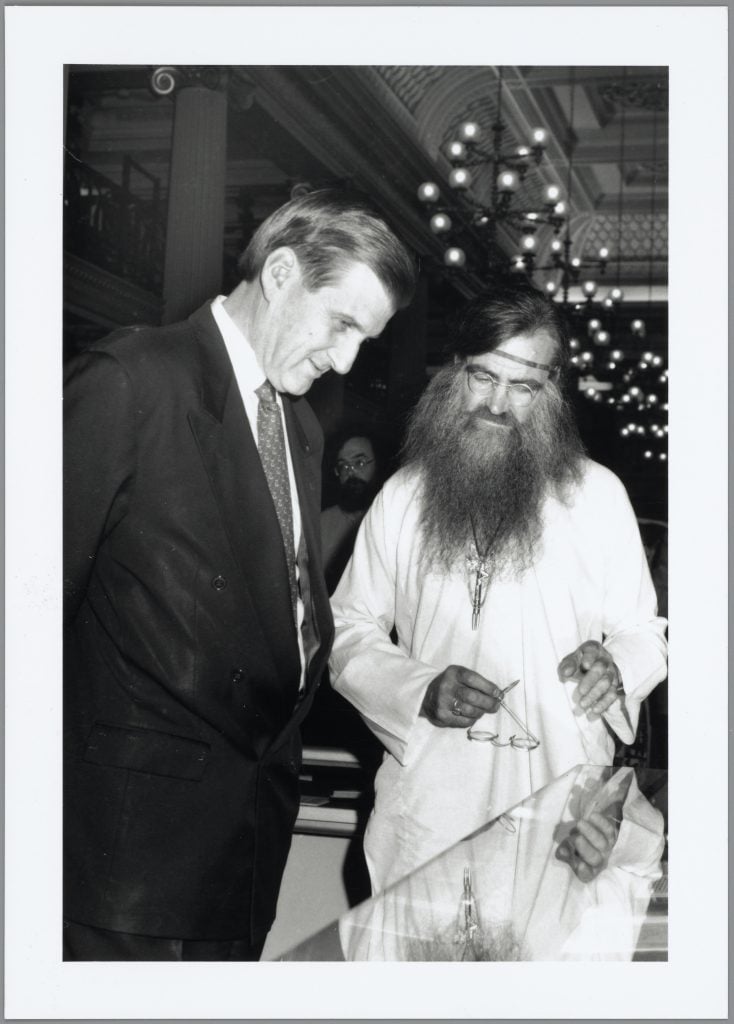
[Premier Jeff Kennett and Ken Pound at the handover ceremony for the Ken Pound Collection in Queen’s Hall, State Library Victoria], 1994. Photo by Adrian Flint. This work is in copyright.
About Ken Pound
Ken’s childhood was not a happy one. Born in Devon in 1936 to an unmarried mother he was put into care when he was just a few months old. He spent his childhood in various institutions where he experienced abuse, neglect and a deep sense of depersonalisation.3 Children’s books became a way of temporarily escaping all of this:
I found like most children would, an escape into the realms of fantasy where there was no control over me by an adult…I could go through this cave entrance, through the magic gates, into the world of fairyland, and that has been with me all my life.4
At 14, Ken moved to Australia as part of a post-war assisted migration scheme. He was trained as a farmhand and developed an appreciation for gardening. He came, eventually, to work with the Brotherhood of St. Laurence as a caretaker of a men’s refuge in Fitzroy where he lived onsite.5
A couple of years into a job which required him to spend the majority of his time tending to the needs of others, he realised he needed to find some activity which was just for himself, so in the early 70s he started to collect children’s books.6
He believes his Cornish heritage inspired in him a love of fairy stories, which never really left him, and he was taken with the work of Australian artist Ida Rentoul Outhwaite who features heavily in his collection.7
Thus began a period of obsessive collecting that would last for 25 years. Ken sourced his books from markets, op shops, book dealers, paper waste, everywhere… Like all things in life, when he set himself to a task, he wanted to do it thoroughly. His objective was to collect ‘every variant of every Australian children’s book’.8
Even with Ken’s dedication, this was not possible. How could it be possible for anyone? The number of children’s books being produced increased, as did their value. Items that were once seen as all but worthless began to grow in status forcing the prices up to a much higher point than they were when he started his collecting in the early 1970s.9
Perhaps it was the neglected status of these items that made the collecting of children’s books appeal to Ken. As someone who had experienced a life of neglect himself, he could see the importance of these items and had the vision to know that in the future, this collection would be important.
During his tenure the refuge moved to a converted church building and Ken took over the choir loft to store what had become a vast collection.10 Australian children’s book bibliographer Marcie Muir provides a wonderful description of the space:
The huge loft that held his books was in the upper part of a disused church, in which floor and steps had been fitted. The area was very large – I walked up a dozen steps to his library. Looking down, I was amazed to see an Aladdin’s cave of books and colourful and picturesque objects…It was rather disorderly but full of interest. Quaint novelties were everywhere, books with exotic covers faced outwards and the wonderfully picturesque spines of runs of 19th-century boys’ books, replete with gilt and pictures in glowing colours, were clearly visible. The whole place seemed a quite magical world of its own.11
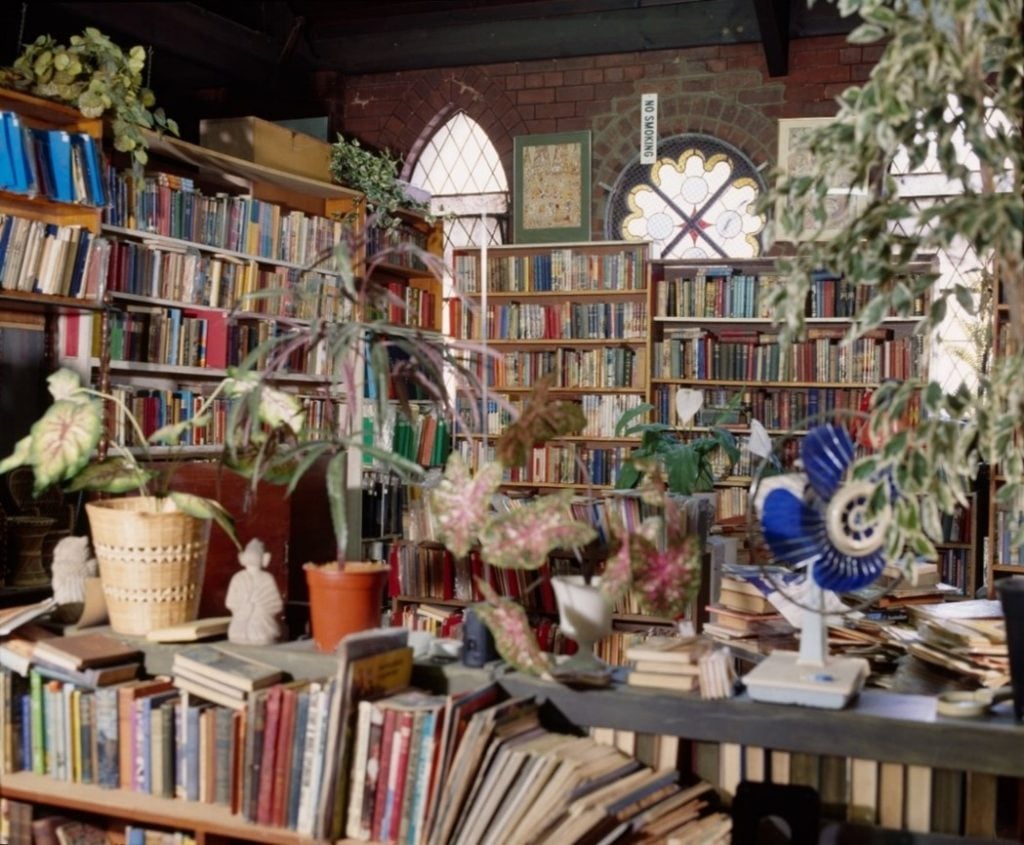
[Ken Pound’s collection when Ken was the caretaker in a men’s refuge in Fitzroy, Melbourne], 1994. Photo by Adrian Flint. This work is in copyright.
After 24 years with the Brotherhood of St Laurence, Ken was looking to retire, but was anxious as to what would happen to his treasured collection. It was through Marcie Muir that he had discovered its value and it was she who contacted libraries on Ken’s behalf to find an appropriate home.12
Although some collectors and institutions were keen to purchase particular items, Ken was aware that its’ value was as a whole collection. Thus he prioritised finding a home that would take the collection in its entirety and that is how it came to find a home at State Library Victoria.13
He felt that children’s books were not valued by the community and that his books must be saved for the future. He never wavered from this conviction and knew that the value of his books lay in the collection as a whole and not merely in the sum of its parts14
The collection
The Ken Pound Collection covers a broad range of areas, with particularly strong representation of works from the first half of the 20th century. The collection includes Australian children’s classics, fairy stories, bush and adventure tales, domestic stories, periodicals and annuals, as well as ephemeral materials which have not survived elsewhere.
One example of such ephemera is ‘Cinderella’s dream and what it taught her’. This is an advertising booklet from the 1920s that was illustrated by Ida Rentoul Outhwaite and accompanied a box of Velvet soap:
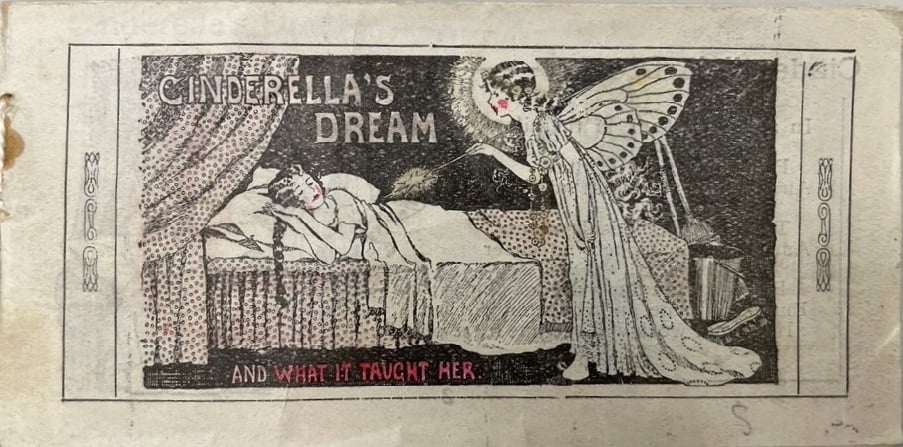
Cinderella’s dream, and what it taught her, JKP A823.2 OU8C, [192?]. Photo taken by author.
But perhaps more fascinating than the breadth of the collection, is its depth. Multiple copies of the same titles, encompassing not only different editions, but any slight variation even between copies of the same edition, have been collected. This has resulted in a staggering offering of books by the likes of Mary Grant Bruce and Ethel Turner. The collection holds approximately 200 copies of Turner’s Seven Little Australians incorporating 95 different editions.15
Items from the collection are regularly requested for a variety of purposes. The value of this collection to scholars of Australian children’s literature is clear, but its uses are far wider than this. The collection also provides ways of charting changes in what values and issues were considered important, how the look of books has changed, and how the publishing industry and book production in Australia developed over this period.16
The tiny differences between and even within different editions of the same book can be used by researchers to help in dating previously undated works – things like comparing publication details, the aesthetics of a book, perhaps the ads it contains, can all help to build a more complete picture.17
And then there’s those of us who just want to see a beloved book from our childhood that has the particular cover that we remember:
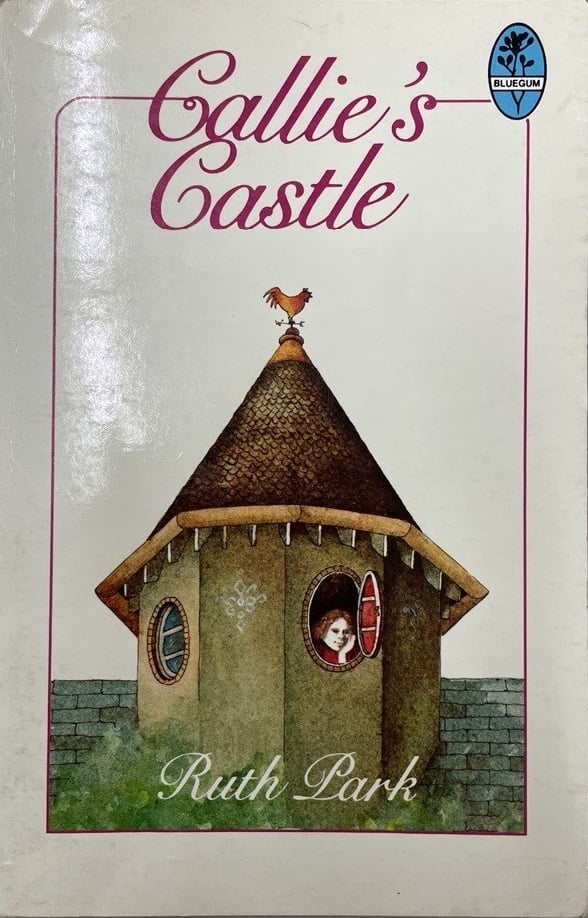
Callie’s castle / by Ruth Park ; illustrations by Kilmeny Niland. JKP A823.3 P219CA,1985. (The cover I remember from my childhood). Photo taken by author.
Ken, who felt such a deep sense of depersonalisation in his youth, now has the legacy of a collection that carries his name. His vision in collecting what was neglected and considered worthless by so many has now become a unique research collection in its own right. As Ken himself said:
I always felt that it was unreal anyway, for one person to have all this, as though [it] didn’t belong to me.18
Thanks to Ken, this collection belongs to all of us.
References
- Ferguson, S, 1995, ‘Two penn’orth of the Pound Collection State Library of Victoria’, The Lu Rees Archives, Notes, Books and Authors, Issue 17, pp.9-13
- O’Conor, J, 2020, ‘The Ken Pound collection of children’s books’, La Trobe Journal, no 104, pp 76-87
- Pound, K, & Davey, G, 2010, Ken Pound interviewed by Gwenda Davey in the Forgotten Australians and Former Child Migrants oral history project [sound recording]
- Tuohy, W, 1994, ‘Cuddlepot, Ginger and Skippy find new home’, The Age, 28 March, p 3
- O’Conor, J, 2020, ‘The Ken Pound collection of children’s books’, La Trobe Journal, no 104, pp 76-87
- Pound, K, & Davey, G, 2010, Ken Pound interviewed by Gwenda Davey in the Forgotten Australians and Former Child Migrants oral history project [sound recording]
- Muir, M, 1994, ‘The end of a quest’, New Librarian, August, pp 25-27
- Bradford, C, 1998, ‘(Re)Constructing Australian Childhood: The Pound Collection at the State Library of Victoria, Australia’, The Lion and the Unicorn, vol 22, no 3, pp 327-337
- Tuohy, W, 1994, ‘Cuddlepot, Ginger and Skippy find new home’, The Age, 28 March, p 3
- Pound, K, & Davey, G, 2010, Ken Pound interviewed by Gwenda Davey in the Forgotten Australians and Former Child Migrants oral history project [sound recording]
- Muir, M, 1994, ‘The end of a quest’, New Librarian, August, pp 26-27
- Pound, K, & Davey, G, 2010, Ken Pound interviewed by Gwenda Davey in the Forgotten Australians and Former Child Migrants oral history project [sound recording]
- O’Conor, J, 2020, ‘The Ken Pound collection of children’s books’, La Trobe Journal, no 104, pp 76-87
- Muir, M, 1994, ‘The end of a quest’, New Librarian, August, p 25
- Bradford, C, 1998, ‘(Re)Constructing Australian Childhood: The Pound Collection at the State Library of Victoria, Australia’, The Lion and the Unicorn, vol 22, no 3, pp 327-337
- Wilson, J, 1994, ‘The Ken Pound Collection of Australian children’s books’, State Library of Victoria Friends Newsletter, June
- Muir, M, 1994, ‘The end of a quest’, New Librarian, August, pp 25-27
- Bradford, C, 1998, ‘(Re)Constructing Australian Childhood: The Pound Collection at the State Library of Victoria, Australia’, The Lion and the Unicorn, vol 22, no 3, p 330


Jodie, I loved reading your story about Ken Pound. Books have always been my friends. My family lived in a small town. A big family and poverty. My grandma gave me a book that I will never forget called the Snow Goose. I can understand Ken’s collection and one day I hope to give me copy to my daughter.
Thank you, Margaret. There is no book quite like one that came to you at the right time in your childhood, is there?
Thanks for this article, Jodi. I’m glad that Ken knew how valued his collection was, before he died. The ephemera are so valuable in their own right.
Thanks Margaret.
The magic of books for a child is so important – and even more so when you don’t have lots of other children in your world. The box of books from the State Library which arrived monthly on the train was a wonderful treat for me in my 1950s country school. Thanks to Ken for preserving and fostering this treasure.
I’m so glad our former travelling library was able to bring the magic of books to you. You may be interested in this blog post about it: https://blogs.slv.vic.gov.au/our-stories/ask-a-librarian/a-library-beyond-the-building/
As Ken Pounds granddaughter, I throughly appreciated this piece. Thank you so much Jodie. He lived his whole life being an amazing man despite hardship, staying true to himself. He brought a life of magic to his family and everyone who met him. I’m so glad that his wonderful nature and unique achievements can be preserved forever.
Thanks Lily! It is lovely to hear from a member of Ken’s family.